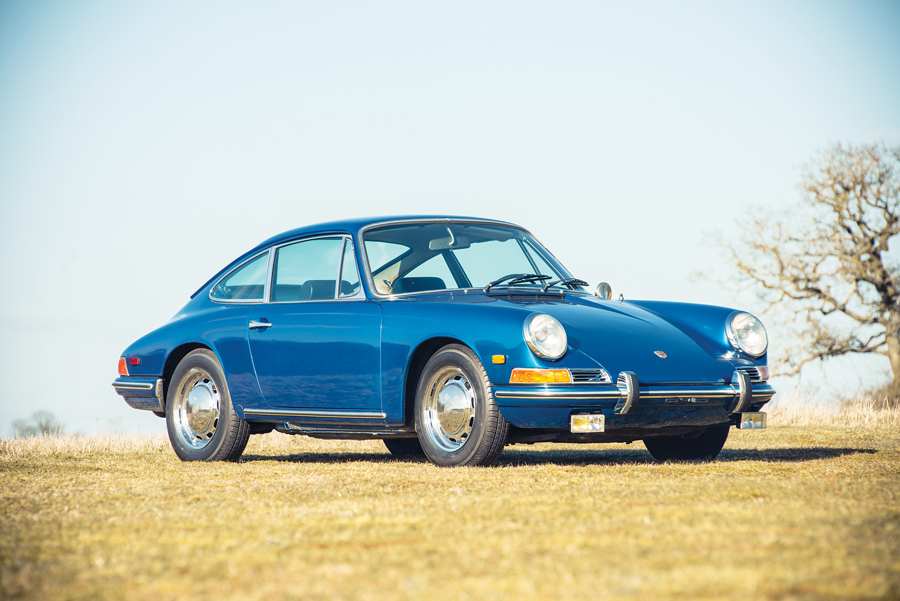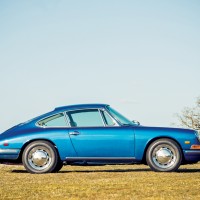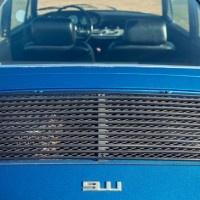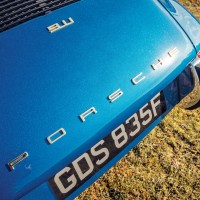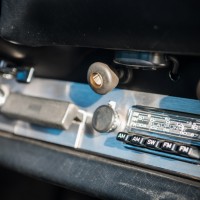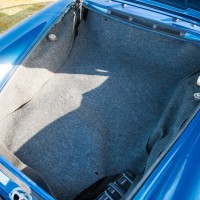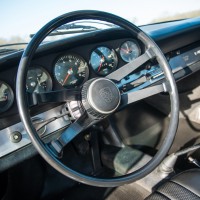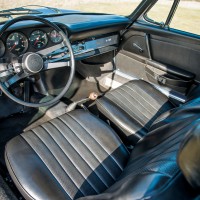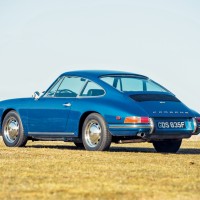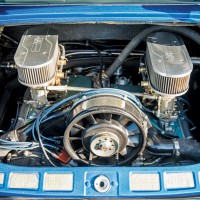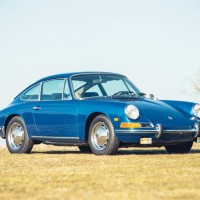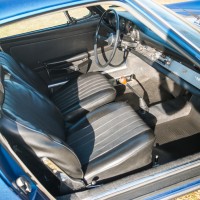SCM Analysis
Detailing
| Vehicle: | 1968 Porsche 911 Coupe |
| Years Produced: | 1963–68 SWB generation one 911s |
| Original List Price: | $4,725 plus delivery |
| SCM Valuation: | $105,000–$115,000 |
| Tune Up Cost: | $1,400–$1,500 |
| Chassis Number Location: | On plate at front lip of trunk panel; chassis stamping above gas tank on passenger’s side |
| Engine Number Location: | On engine case boss under the fan |
| Club Info: | Porsche Club of America |
| Website: | http://www.pca.org |
| Alternatives: | 1968 Corvette 427/435 L89, 1965–68 Ferrari 330 GT 2 2, 1968–71 Jaguar XKE Series II 4.2 |
| Investment Grade: | B |
This car, Lot 158, sold for $70,286, including buyer’s premium, at Silverstone Auctions’ Restoration Showcase Sale in Birmingham, England, on March 28, 2015.
This 911 gives us an opportunity to evaluate long-hood — aka low-bumper — early 911s in the marketplace after an amazing price run-up over the past five years.
Observers have been divided into two camps: fans who applaud the market’s recognition of these fine sports cars, and naysayers who can’t believe the rapid appreciation for a car built in relatively large numbers.
Lots of cars, lots of demand
There were almost 82,000 long-hood 911s built over 11 years, from 1963 to 1973. The fact that the model has continued through to today, however, means that several generations of car-loving teenagers have grown up lusting after 911s of various vintages.
While supply is large, demand is larger. It certainly helps that a well-turned-out early 911 is a rewarding driving experience. They are soundly engineered and built, instantly recognizable, spritely and agile, have enough horsepower (barely, sometimes), are comfortable, and they make glorious noises. It all adds up to iconic stature.
A little 911 history
The early 911s range from 1963 prototypes, through 1964 901s and then into production 911s from 1964 up. Of the 13 original prototypes, only one is widely known to have survived. Don Meluzio’s superb and idiosyncratic example is probably not buyable at any price — and he has turned down some astonishing offers.
The 1964 901s number about 82 and are differentiated predominantly by their Porsche factory production 901 nomenclature. This happened before Porsche decided to acquiesce to Peugeot’s copyright claim for middle-zero three-digit numbers. Thus did Porsche design project number 901 become the 911 model. Starting in 1965, production numbers mounted into the thousands.
At first, there was just the 911. In 1966–67, the line grew with the introduction of 911S, featuring an uprated engine, fancier trim and the Fuchs alloy wheels that are now a signature.
Because of emissions issues in 1968, the S was dropped from the U.S. model lineup and the one-year-only L inserted, essentially a base 911 with S trim features. The S continued in the rest of the world.
For 1969, Porsche introduced mechanical fuel injection, which satisfied the smog requirements, and the S returned to the U.S. With other improvements, including a longer wheelbase, the line went to three models, the T, the E, and the S – increasingly more powerful with other appearance and comfort changes that could be optioned onto the lower-priced models. The three-model lineup lasted through the end of the low-bumper era in 1973.
Bigger and deeper
The first displacement increase occurred in 1970 with the move from 1,991-cc engines to 2,195-cc engines, which was impactful but not astounding. The 2.2 engines kept the high-pitched exhaust wail. In 1972, the engine was enlarged to 2,341 cc, and the exhaust note went baritone — and the 1972s have the one-year-only right rear fender oil-filler inlet. The 1973 model added some unsightly black rubber bumper bombs in U.S.-market cars.
Throughout it all, the T was the base model, which if not optioned out, was the lightest weight and always the least powerful. As expected, the E was a tweener, but a sleeper in that it was an excellent driver, absent the hydra-pneumatic front suspension in the 1969 cars only — happily easily replaced. The S was the rarest model in numbers, the most powerful, and now the most desirable. There is some debate about the models. The T and the E are easier to drive around town, and fine on the highway. The S is an Autobahn burner, built for high speeds, but it is a tad raw in town use because of its peaky cams.
Among the years and models, all 911S cars, especially the 1967 model and the last-of-the-line 1972–73 cars, have the best market acceptance. 1968 ROW-only S cars are sleepers, basically identical to 1967s except for more black paint outlining the fans on the Fuchs alloys. I think 2.2s are relatively underappreciated, as are all E cars.
What model year is it?
So where does this 1968 coupe fit in? It appears to be a base-model 911 with chromed steel wheels, not Fuchs alloys, and obviously absent the S engine and many options.
There may be confusion about the model year of this 911. I believe that it is a 1968 model based on the serial number, not a 1967 registered as a 1968, which is suggested in Silverstone Auctions’ write-up. The difference in value between 1967 and 1968 base 911s is minimal, with a slight edge to the 1967, so we’ll assign no foul.
This 911 had two documented owners in California through 2010, when it went to the U.K., where it was sold. It also had all the correct trim pieces and looked solid and straight as befits its California heritage. It was painted desirable Metallic Blue, with one older repaint, and otherwise looked quite original. Some light modifications existed in the engine compartment, and the much-disliked smog pump was missing.
It was estimated presale at £45,000–£55,000 ($66,939–$81,814), and sold at the bottom end of that range, £47,250 ($70,286). While the mileage was not disclosed, and the structural soundness could not be directly assessed, we’d assume reasonably moderate mileage based on the interior condition, and no or little rust based on the 42 years in California. If all that were true, and despite not being an S, this 911 was one smoking deal. ♦
(Introductory description courtesy of Silverstone Auctions.)
